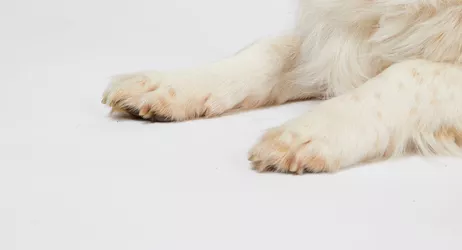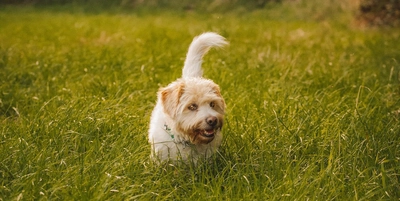Why Do Dogs Have Dewclaws?
- 21 Sep 2023
- 3m read

You might have noticed that peculiar fifth toe on your dog's leg, seemingly disconnected from the rest. That, my fellow dog enthusiasts, is the dewclaw. But what's its purpose?
What is the purpose of a Dewclaw on a Dog?
Dewclaws are essentially a dog's extra thumb, positioned higher up on their leg than the rest of their toes. While it may seem like an evolutionary afterthought, these little digits do serve a purpose.
One of the primary roles of the dewclaw is to provide stability during activities that require tight turns, like running at high speeds or navigating rough terrain. Think of it as your dog's built-in traction control system. When they need to make a sharp turn or quickly change direction, that dewclaw comes into play, helping them grip the ground better and prevent potential injuries.
Do All Dogs Have Dewclaws?
Not every dog is born with dewclaws. The presence of these extra claws can vary not only from breed to breed but also among individual dogs.
In general, most dogs have dewclaws on their front legs. These dewclaws are more commonly developed and are firmly attached to the leg, much like the other toes. However, not all dogs have them on their hind legs, and some breeds may even have double dewclaws on their hind legs.
Breeds like the Great Pyrenees, Saint Bernard, and Briard are known for having dewclaws on their hind legs. These additional dewclaws can serve a similar purpose to the front dewclaws, offering extra stability when these big dogs move around.
Interestingly, some breed standards even require that these dewclaws remain intact, highlighting their importance in certain canine activities.
Are Dewclaws Painful to Dogs?
Concerns about dewclaws often revolve around their potential for injury. Since they're positioned higher on the leg and don't make contact with the ground as regularly as the other toes, they can be more susceptible to damage.
Dewclaws can get snagged on various objects, leading to painful injuries. Imagine your dog frolicking through the woods and catching their dewclaw on a branch or fence. Ouch! In such cases, dewclaw injuries can range from minor cuts and scrapes to more severe damage that might require veterinary attention.
To minimise the risk of dewclaw injuries, many dog owners opt to have them removed when their pups are young. This procedure is often performed at the same time as spaying or neutering. However, the decision to remove dewclaws should be carefully considered, as they do serve a purpose, as discussed earlier.
If you choose not to remove your dog's dewclaws, it's essential to keep an eye on them. Regularly inspect their dewclaws for any signs of injury, and if you notice any problems, consult your vet.
Why are They Called Dewclaws?
Now, let's unravel the mystery behind the name "dewclaw." It's an unusual term that has intrigued dog lovers for generations.
The name "dewclaw" likely originates from the word "dewclawed." This term was used in the past to describe an animal that had been declawed. Over time, it evolved to specifically refer to the fifth toe on a dog's leg.
The exact etymology is still somewhat of a puzzle, but one theory suggests that the term "dewclaw" was inspired by the notion that these toes barely touch the ground, much like morning dew lightly rests on the grass.
So, there you have it – a brief exploration of why dogs have dewclaws, whether all dogs have them, their potential for injury, and the curious origins of their name.
Remember, dewclaws might seem like a small detail in your dog's anatomy, but they play a significant role in helping your four-legged companion navigate the world around them. Whether they're sprinting through the park or making those lightning-fast turns during a game of fetch, those dewclaws are there to lend a helping hand, or should we say, a helping paw.




